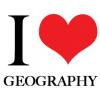- 0 replies
- 2,622 views
- Add Reply
- 0 replies
- 1,151 views
- Add Reply
- 0 replies
- 2,599 views
- Add Reply
- 2 replies
- 3,134 views
- Add Reply
- 0 replies
- 1,042 views
- Add Reply
Shapely 2.0.0 Released

By Lurker,
Shapely 2.0 version is a major release featuring a complete refactor of the internals and new vectorized (element-wise) array operations, providing considerable performance improvements (based on the developments in the PyGEOS package), along with several breaking API changes and many feature improvements.
Refactor of the internals#
Shapely wraps the GEOS C++ library for use in Python. Before 2.0, Shapely used ctypes to link to GEOS at runtime, but doing so resulted in extra ove
Landsat Next

By Lurker,


Landsat Next is on the horizon—the new mission will not only ensure continuity of the longest space-based record of Earth’s land surface, it will fundamentally transform the breadth and depth of actionable information freely available to end users.
Landsat Next will also provide new capabilities for the next generation of Landsat users. The enhanced spatial and temporal resolution of the 26-band “superspectral” Landsat Next constellation will unlock new applications for water qu
All Landsat Collection 1 data will become unavailable on December 30, 2022.

By Lurker,
This removal includes all Collection 1 Level-1, Level-2, Level-3, and ESPA- related Landsat 1-8 products. Collection 1 has not been updated with Landsat products since December 31, 2021 and does not include Landsat 9 data.
Users are encouraged to migrate their workflow to Landsat Collection 2 as soon as possible. Due to advancements in data processing and algorithm development, users are discouraged from using Collection 1 and Collection 2 interchangeably within the same workflow.
Land
QField 2.5 is here, reaching new heights

By Lurker,


QField’s main new feature of this 2.5 release cycle is its brand new elevation profiling functionality which has been added to the measuring tool. Users are now able to dynamically build and analyze elevation profiles wherever they are – in the field or on their desktop – by simply drawing paths onto their maps and projects.
This is a great example of QField’s capability at bringing the power of QGIS through a UI that keeps things simple and avoids being in your way until you need it. Oh an
HISTARFM - How to Work with Gap-Filled Imagery

By Lurker,
Although there is an extensive array of optical remote sensing sensors from a variety of satellites providing long time data records, their data are incapable of retrieving reliable land surface information when clouds, aerosols, shadows, and strong angular effects are present in the scenes. The mitigation of noise and gap filling of satellite data are preliminary and almost mandatory tasks for any remote sensing application aimed at effectively analyzing the earth's surface continuously through
-
Forum Statistics
8.8k
Total Topics43.5k
Total Posts




